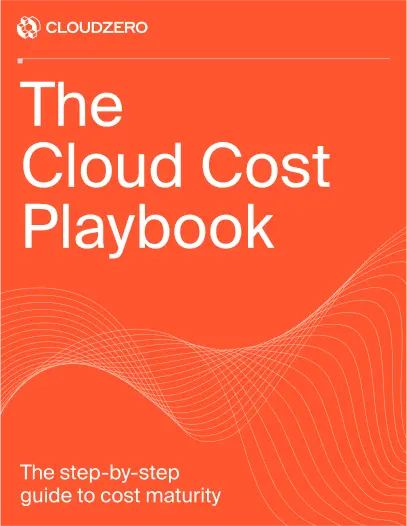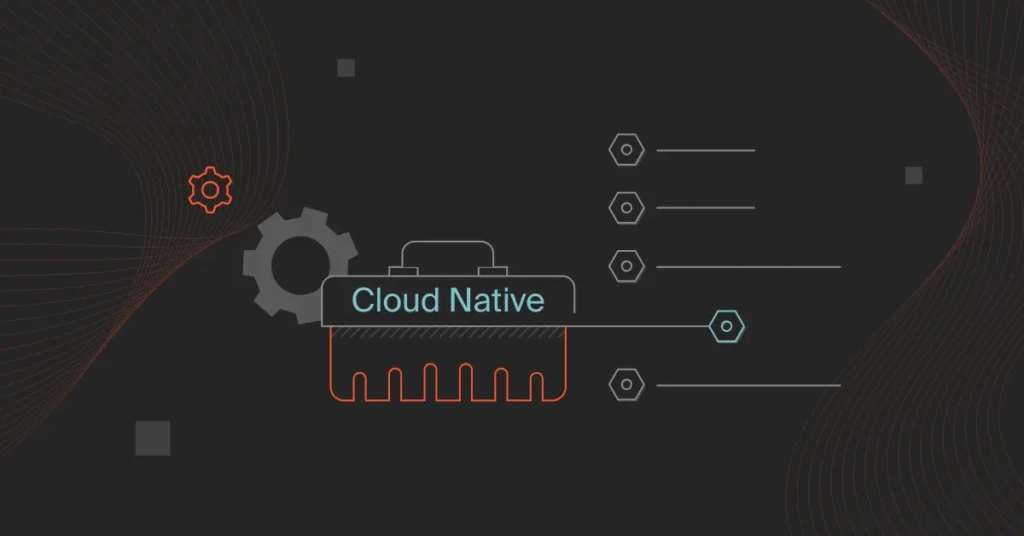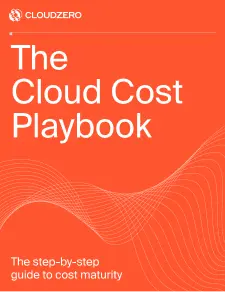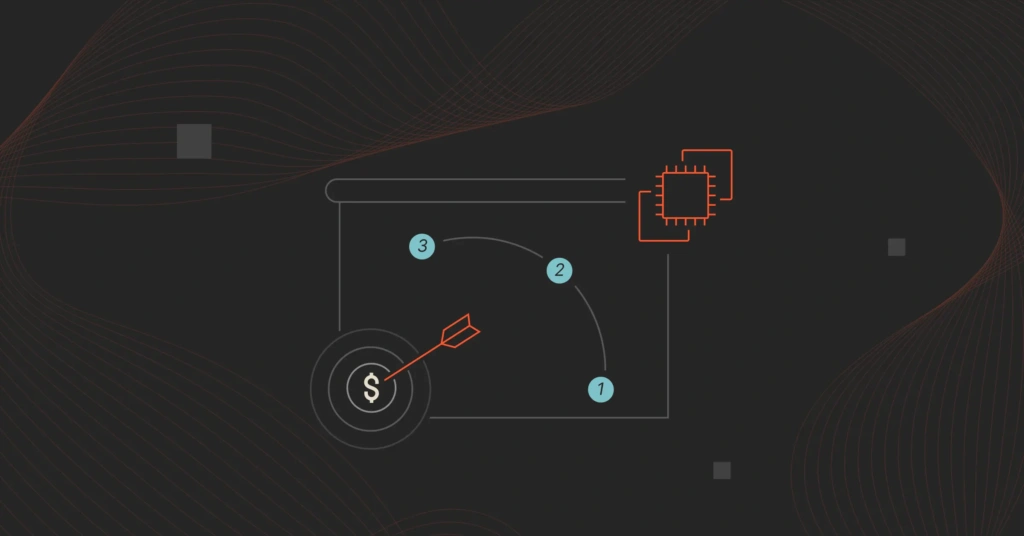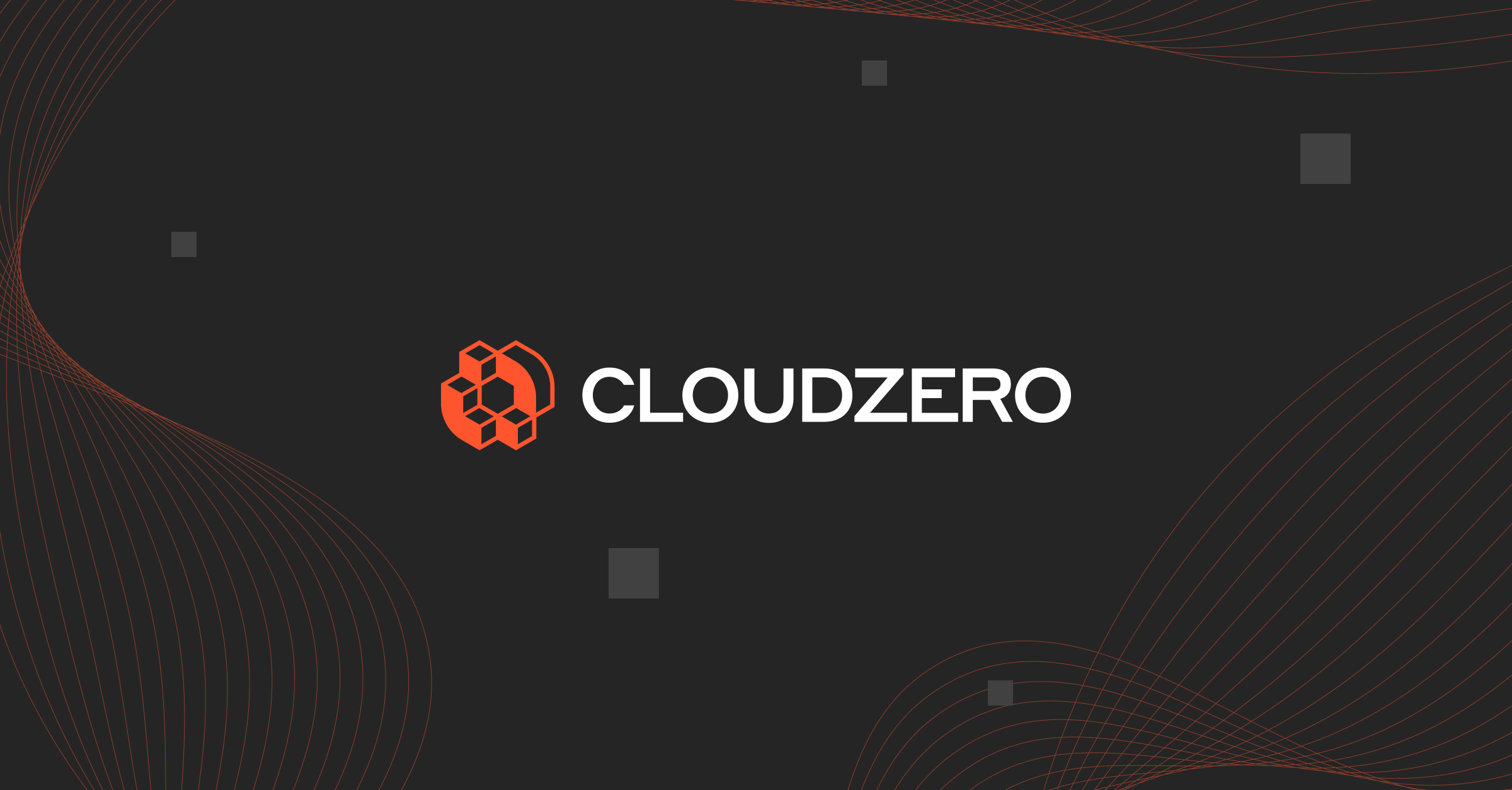Cloud-native tools promise speed, scalability, and resilience. The catch is you have to pick the right ones and use them well. Without the right foundation, they can mean more complexity, hidden costs, and a false sense of control.
In this guide, we’ll help you avoid that trap. From infrastructure to observability and CI/CD tools, we’ll cover the solutions shaping modern cloud stacks.
And if you’re wondering how to keep your cloud spend in check while at it, we’ve got that covered, too.
Let’s dive in.
What Are Cloud-Native Tools?
Cloud-native tools are software solutions built specifically to run in dynamic, distributed, cloud environments. In contrast, cloud-hosted tools are often traditional software (monolithic) that has been retrofitted for cloud platforms.
Cloud-native tools are designed from the ground up to take advantage of modern cloud-native architecture, including containers, microservices, declarative APIs, service meshes, and continuous integration and delivery (CI/CD) pipelines.
Spot the differences here:
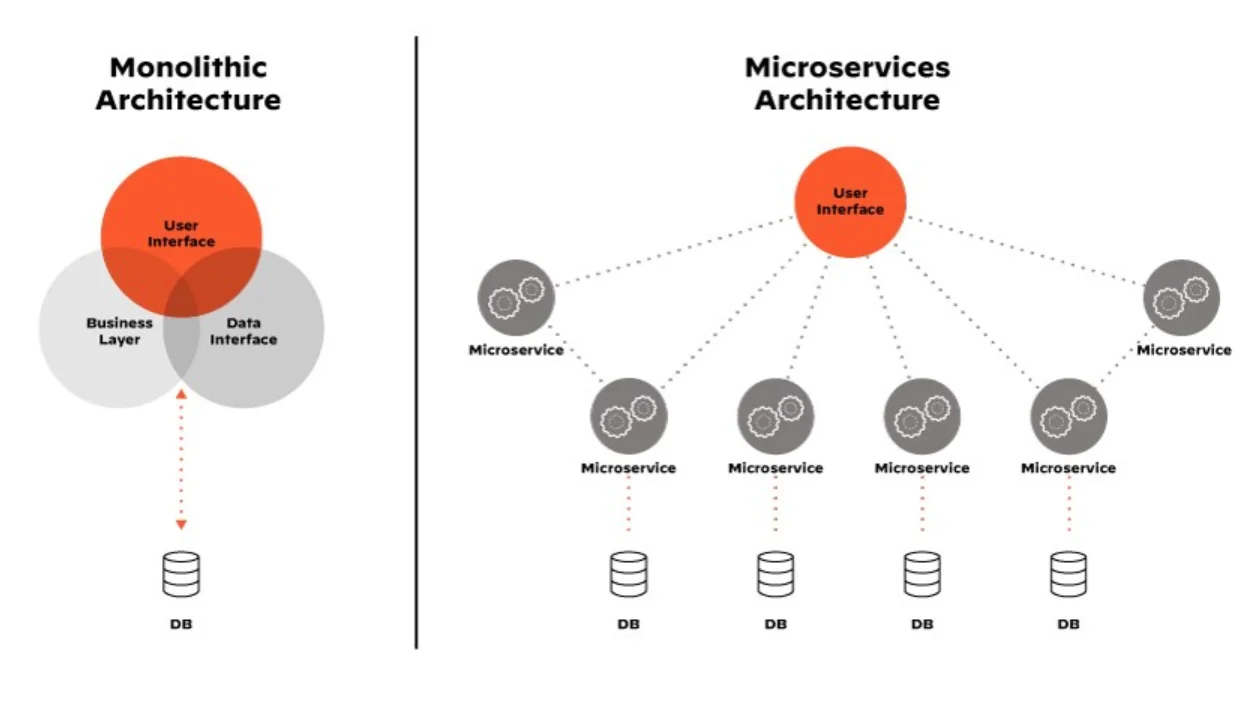
Image: Palo Alto Networks
Related read: What Is Container Orchestration (And Why Even Care)?
Cloud-native vs. Cloud-hosted: What’s the difference?
Here’s a no-frills way to think about it:
- Cloud-hosted tools are traditional applications or platforms that have been lifted and shifted into the cloud. Think of legacy monitoring tools hosted on virtual machines or monolithic applications redeployed on AWS or Azure. See What is Lift and Shift (And Is It Right For You?).
- Cloud-native tools, on the other hand, are built for elasticity, scalability, and automation from the start. They’re containerized, orchestrated (often using Kubernetes), and designed to automatically scale up or down on demand. This makes them a natural fit for the DevOps pipeline and CI/CD best practices.
This distinction also affects the level of visibility and control you’ll have along the way.
So, what are the building blocks of cloud-native infrastructure?
Cloud-native tools often interact with or power the core components of modern cloud-native infrastructure. These components include:
- Containers: These are isolated environments that package code and dependencies together for consistent deployment.
- Orchestration platforms include tools like Kubernetes, which manage containerized workloads and services.
- Service meshes are the infrastructure layers (like Istio or Linkerd) that handle service-to-service communication, security, and observability.
- Declarative configuration: Using infrastructure-as-code (IaC) tools like Terraform or Crossplane to define and provision environments.
Together, these enable teams to build loosely coupled systems (cloud-native applications) that are scalable, resilient, and observable by design.
And why does cloud-native matter, especially now?
For software engineers, the right tooling can reduce toil, accelerate deployments, and improve observability. For CTOs, it shapes the architectural flexibility and velocity of your entire organization. For CFOs, cloud-native tooling has a direct impact on cost transparency, predictability, and ROI.
There’s more.
What Are The Benefits Of Cloud-Native Tools Today?
Adopt the tools thoughtfully, and you can unlock tangible benefits across performance, scalability, cost efficiency, and business agility, including:
Greater agility and faster innovation
These tools enable continuous delivery, automated testing, and real-time rollbacks. For your engineers, this means freedom to iterate quickly, and for CTOs, the ability to push product innovation without waiting on traditional release cycles.
Seamless scalability
Traditional monolithic applications bumble under pressure. But Cloud-native applications scale horizontally by design. Most scale resources up or down automatically based on usage.
This elasticity can help your team maintain performance during traffic spikes while minimizing waste during periods of low usage.
For CFOs, this means paying only for what you use, not what you might need someday.
Improved resilience and uptime
Cloud-native architecture promotes fault isolation, self-healing systems, and distributed workloads. If one container or service fails, others keep running. For customer-facing apps, this means better uptime and less revenue risk.
Better observability and performance insights
Tools like Prometheus, OpenTelemetry, and Fluent Bit capture granular performance, networking, and resource usage data as a core feature.
Improved cost control and FinOps potential
Think of mapping spend to specific teams, environments, services, and even features. This makes implementing FinOps possible in complex architectures.
Ecosystem compatibility and vendor flexibility
Cloud-native tools are generally open-source, API-driven, and loosely coupled. This means you’re not locked into one provider’s ecosystem. You’re free to build a multi-cloud or hybrid-cloud strategy that fits your business goals.
Thinking of going all-in on cloud-native tooling?
You’re not alone. Here’s how others are doing it.
How To Choose The Right Cloud-Native Tools
Consider these factors before making a commitment. It’s a solid way to avoid tool sprawl, messy integrations, and surprise costs.
Start with your use case
Are you deploying microservices to Kubernetes? Building a CI/CD pipeline for a multi-cloud environment? Or, do you need granular observability across ephemeral workloads?
You’ll want to prioritize tools that solve your team’s problems. What works for a fast-moving startup will be different for a mid-sized enterprise modernizing its cloud-native infrastructure in stages.
Evaluate ecosystem compatibility
Look for tools that follow open standards, offer robust APIs, and integrate with your existing platforms.
- Do the tools work with your preferred language/runtime?
- For platform teams: Are they Kubernetes-native or cloud-agnostic?
- For leadership: Will this tool help or hinder a future multi-cloud or hybrid cloud strategy?
Choosing modular, interoperable tools helps you stay agile as your architecture evolves.
Assess maturity and community support
Some tools are stable and well-supported. Others are promising but immature. So, look for:
- An active contributor base and recent commits
- Strong documentation and onboarding
- Vibrant community or commercial backing
- Support options, especially for critical workloads
Your production systems will need reliability, especially when uptime and cost are on the line.
Understand operational complexity
Simple, well-documented tools often outperform “feature-rich” ones that require constant babysitting. So, consider:
- How steep is the learning curve?
- Will your team need to upskill?
- Does it add overhead for your SRE or DevOps teams?
Bonus tip: Look for tools with declarative configuration (like YAML or Terraform modules) and GitOps compatibility for better maintainability.
Think about the cost beyond the license
Also consider:
- How much compute/storage will it consume?
- Will you need to run additional sidecars or agents?
- How easy is it to attribute costs to specific teams, environments, or features?
You’ll also want to get granular visibility into how cloud-native tools and workloads affect your cloud bill. This will help you optimize your spend before it spirals out of control.
Align with business goals and team readiness
Finally, think bigger than just tech specs. Also ask:
- Will this tool accelerate our roadmap?
- Is our team ready to support and scale it?
- How will it help us measure success (in speed, reliability, cost, or user impact)?
You want tooling that empowers, not burdens your people. With that in mind, here are solid examples to look into.
By Category: 17 Must-Know Cloud-Native Tools For Building Smarter Today
We’ll cover what they do, why they matter, and the standout tools in each space.
Cloud-native infrastructure provisioning and orchestration tools
Want to provision resources as code? These tools automate infrastructure deployment across cloud environments, reduce configuration drift, and align engineering and operations.
1. Terraform
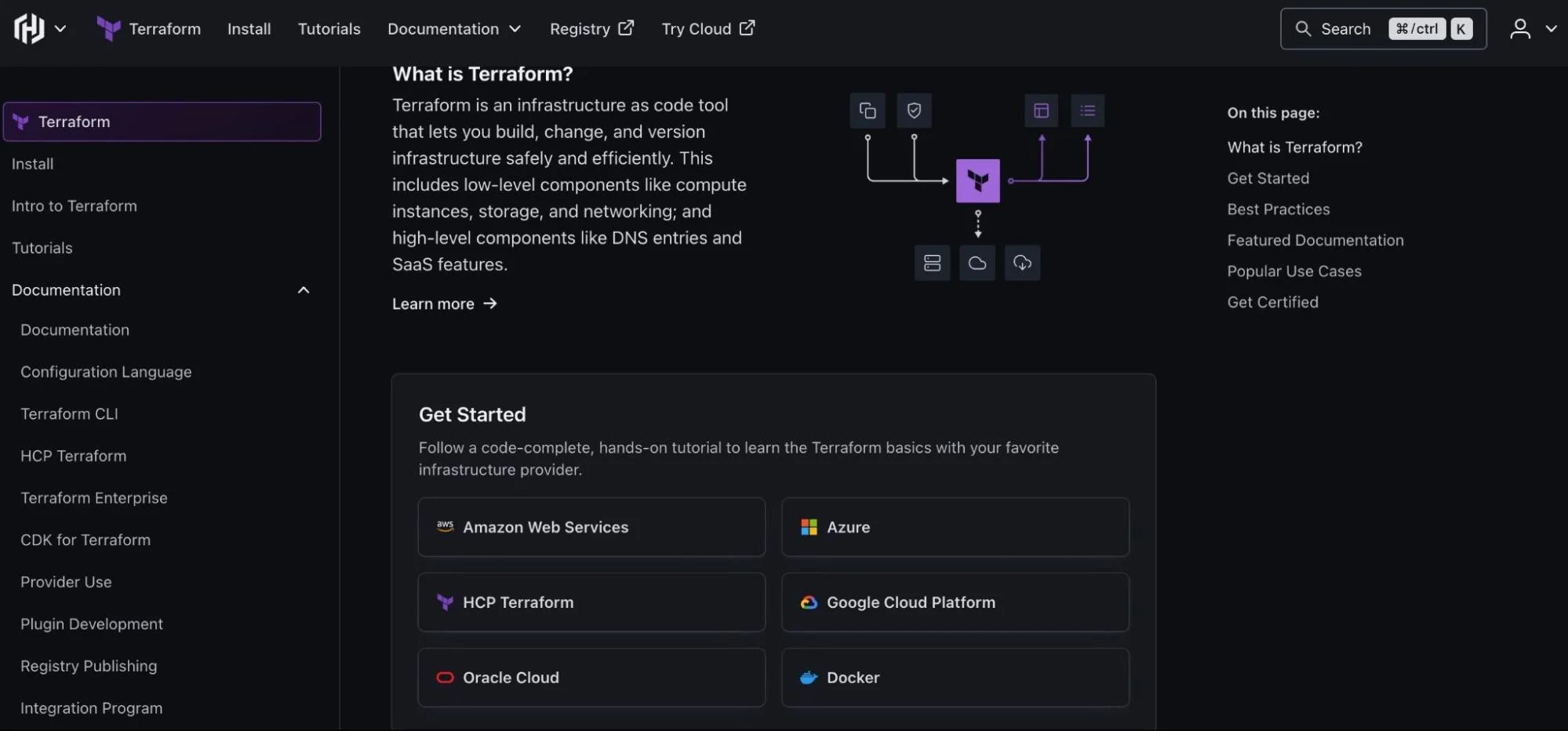
Terraform lets your teams define cloud and SaaS infrastructure in declarative configuration files. Its state management and plan/apply workflow also make infrastructure changes safer and more predictable. It also supports multi-cloud environments and SaaS services.
Terraform pricing: Open-source version. Terraform Cloud includes free and paid tiers.
2. Pulumi
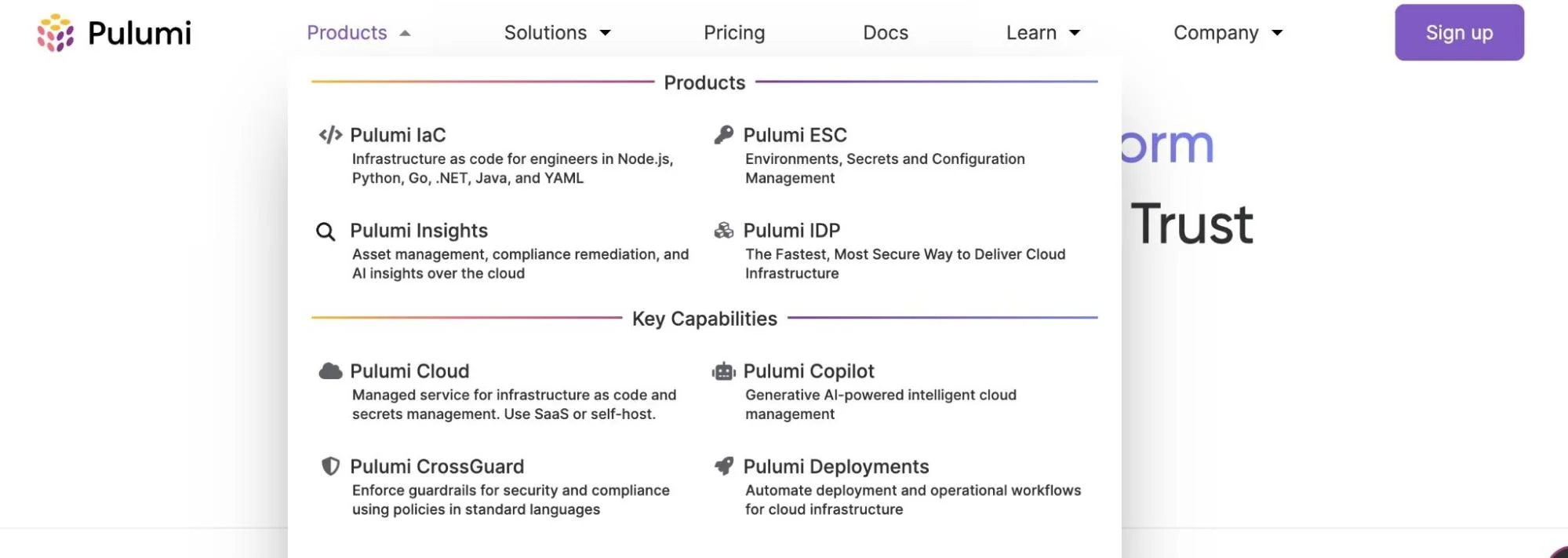
Pulumi lets you use TypeScript, Go, Python, and .NET to define and deploy cloud infrastructure. Unlike Terraform’s configuration-driven model, Pulumi treats infrastructure as software. This means your developers can use loops, conditionals, and abstractions, bringing software engineering best practices into your DevOps workflow.
Pulumi pricing: Community tier. Paid plans starting at $50/month per user for team features, policy controls, and enterprise-grade support.
3. Crossplane
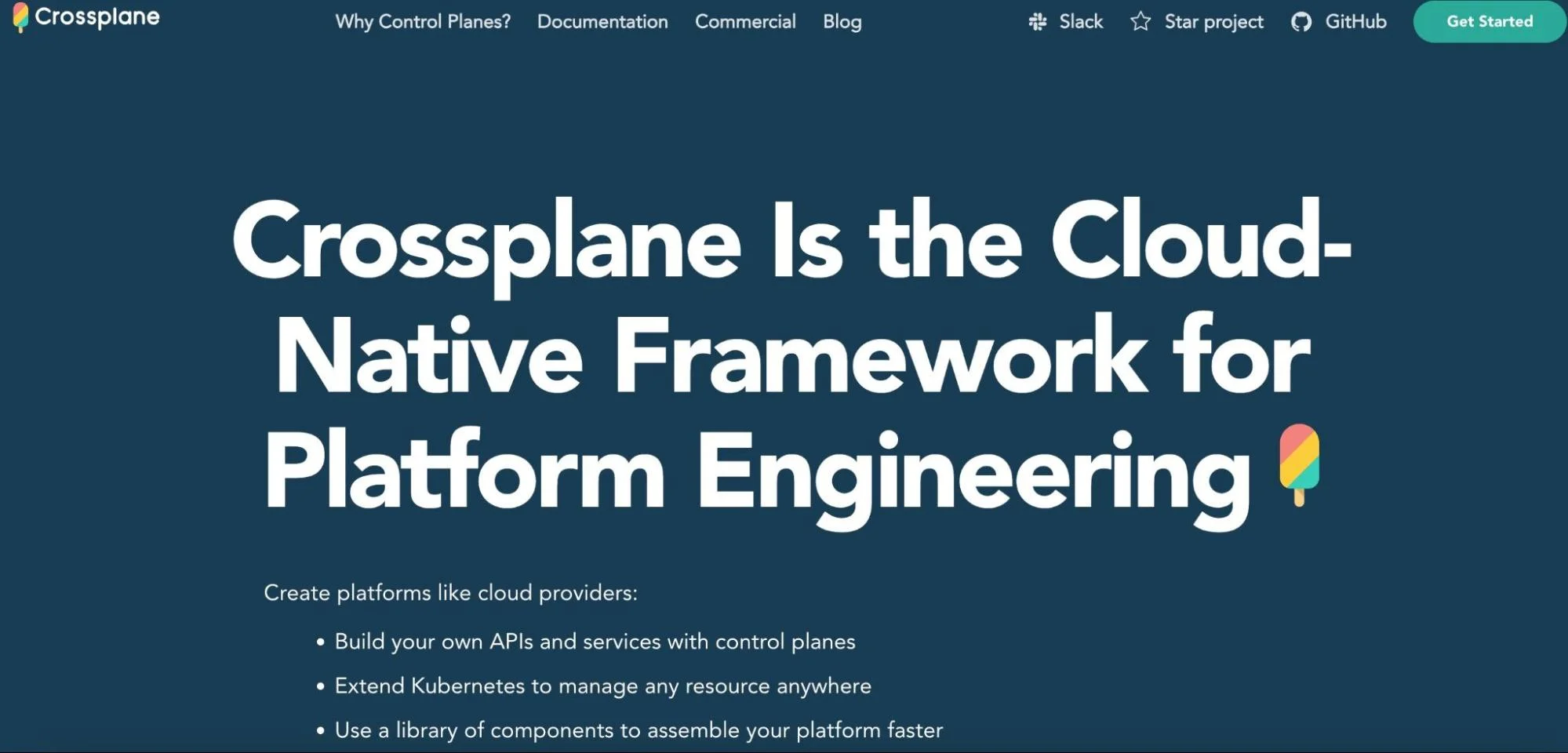
Crossplane integrates into your Kubernetes clusters, enabling platform engineering teams to expose infrastructure as self-service APIs for internal developers, all with GitOps compatibility.
Crossplane pricing: Open-source and free to use. Commercial support is available via Upbound.
Cloud-native IaC tool alternatives: AWS CloudFormation, Cluster API, Bicep, AWS CDK
Cloud-native Continuous Integration and Continuous Delivery (CI/CD) tools
CI/CD tools automate the build, test, and deployment process. The best CI/CD tools are Kubernetes-aware, GitOps-friendly, and integrate cleanly with modern DevOps workflows.
Here are some top cloud-native CI/CD tools to consider:
4. Argo CD
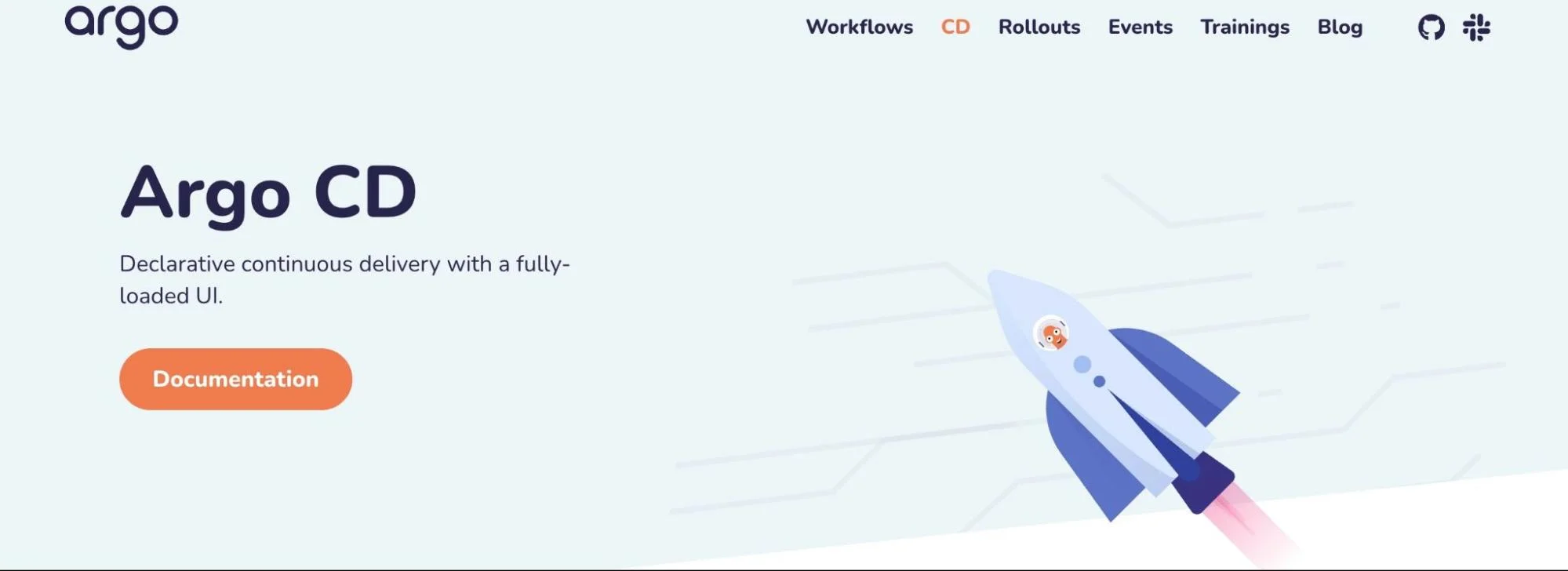
This Kubernetes-native GitOps tool continuously syncs your cluster state with a Git repository. Argo CD gives teams real-time visibility into app status, supports multi-cluster deployments, and integrates well with Helm, Kustomize, and Jsonnet. It’s lightweight, open source, and trusted by teams running production workloads at scale.
Argo CD pricing: Open source.
Argo CD alternatives: Flux, Jenkins X, Spinnaker
5. GitHub Actions
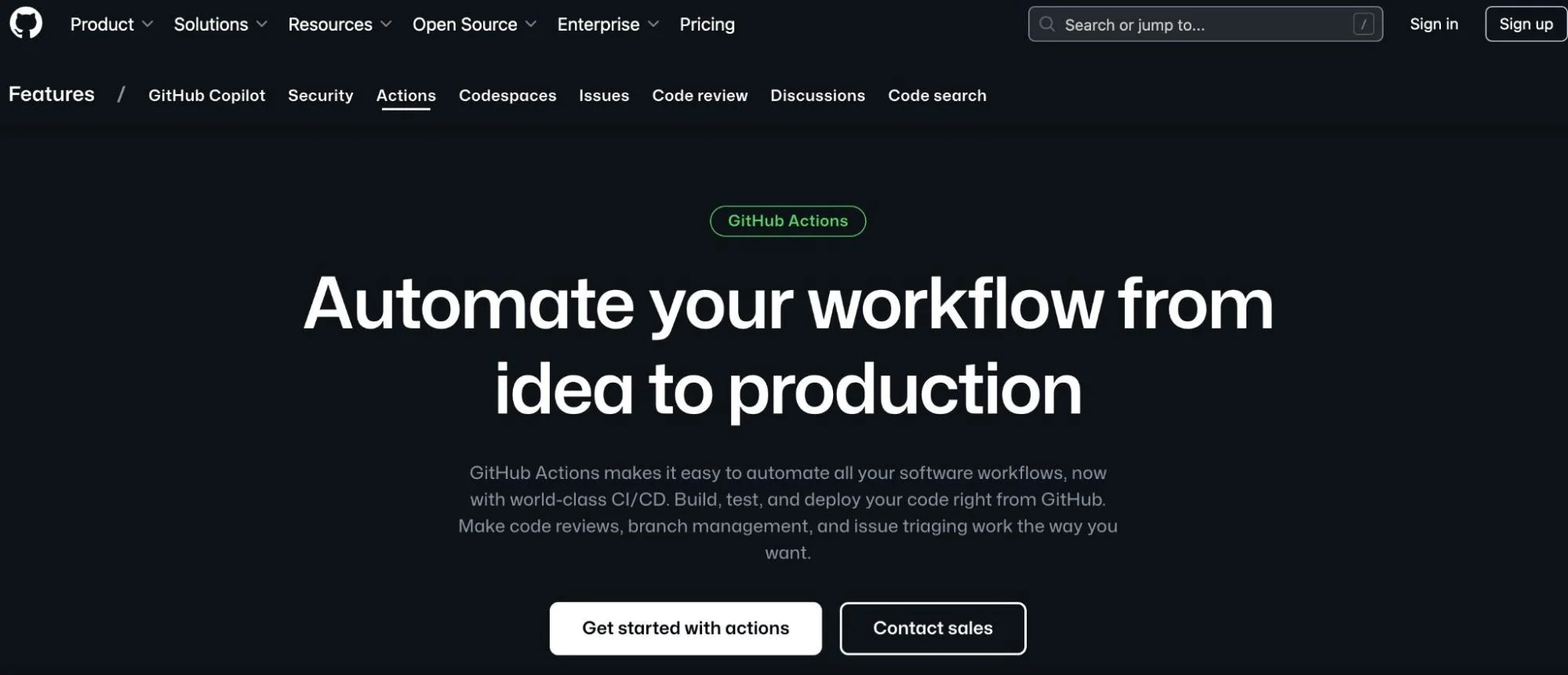
If you’re already using GitHub, Actions offers a frictionless way to implement CI/CD without adding another tool. It’s tightly integrated with pull requests, supports secrets and environments, and has a massive marketplace of reusable workflows.
Pricing: Includes 2,000 free CI minutes per month for public repos. For private repos, additional minutes are billed per Linux minute.
GitHub Actions alternatives: GitLab CI, CircleCI, Bitbucket Pipelines
6. Tekton
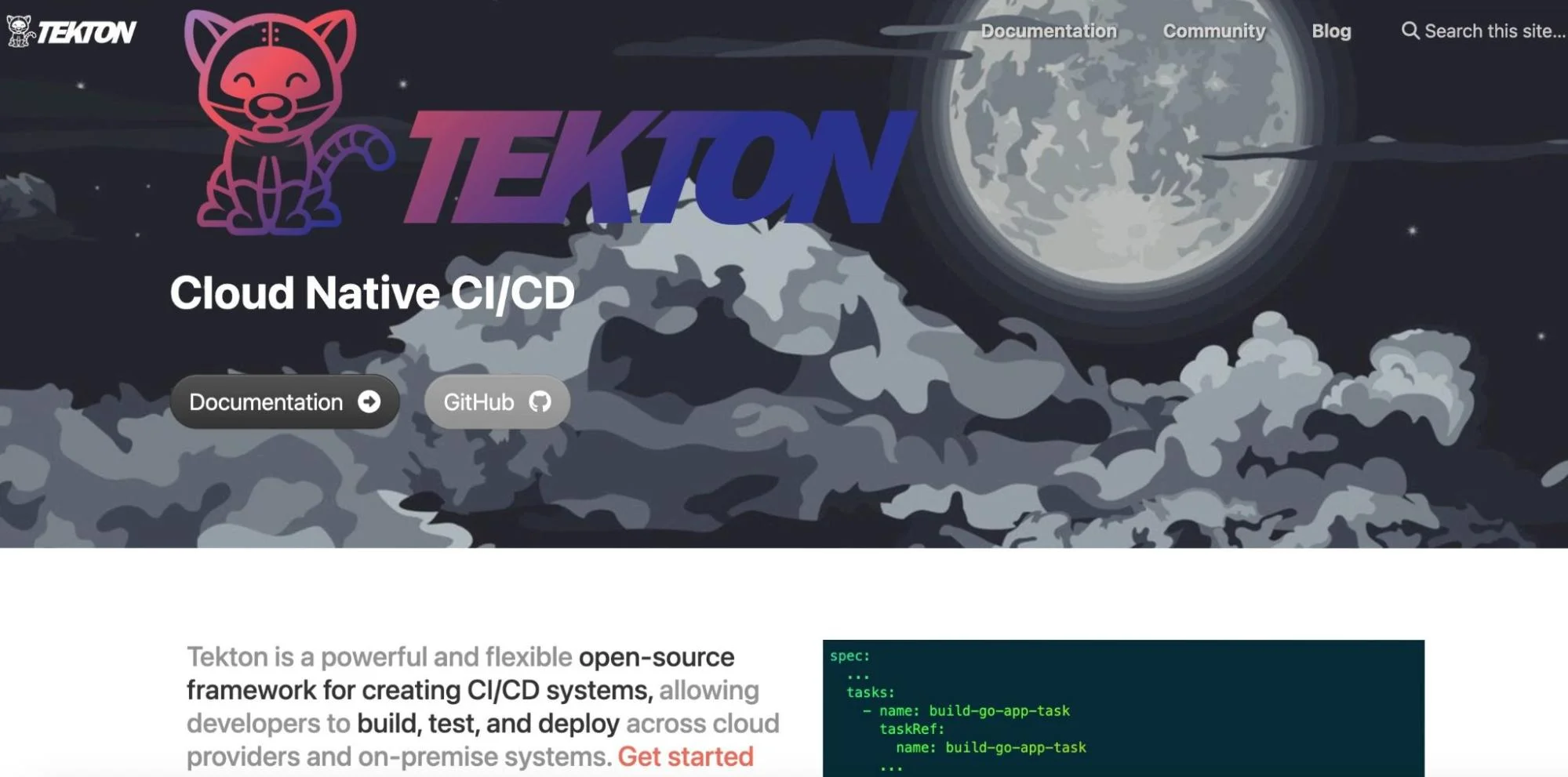
Tekton is designed for Kubernetes-native environments. It allows teams to define custom pipelines using standard Kubernetes resources and APIs. It’s also a foundation for other platforms like Jenkins X and OpenShift Pipelines.
Pricing: Open source and free to use.
Tekton alternatives: Argo Workflows, Jenkins X, Drone
Also see:
Cloud-native observability and monitoring tools
Modern cloud-native observability stacks provide visibility across metrics, traces, and logs. This can help your teams maintain performance, debug issues faster, and track resource consumption.
Here are three standout examples:
7. Prometheus
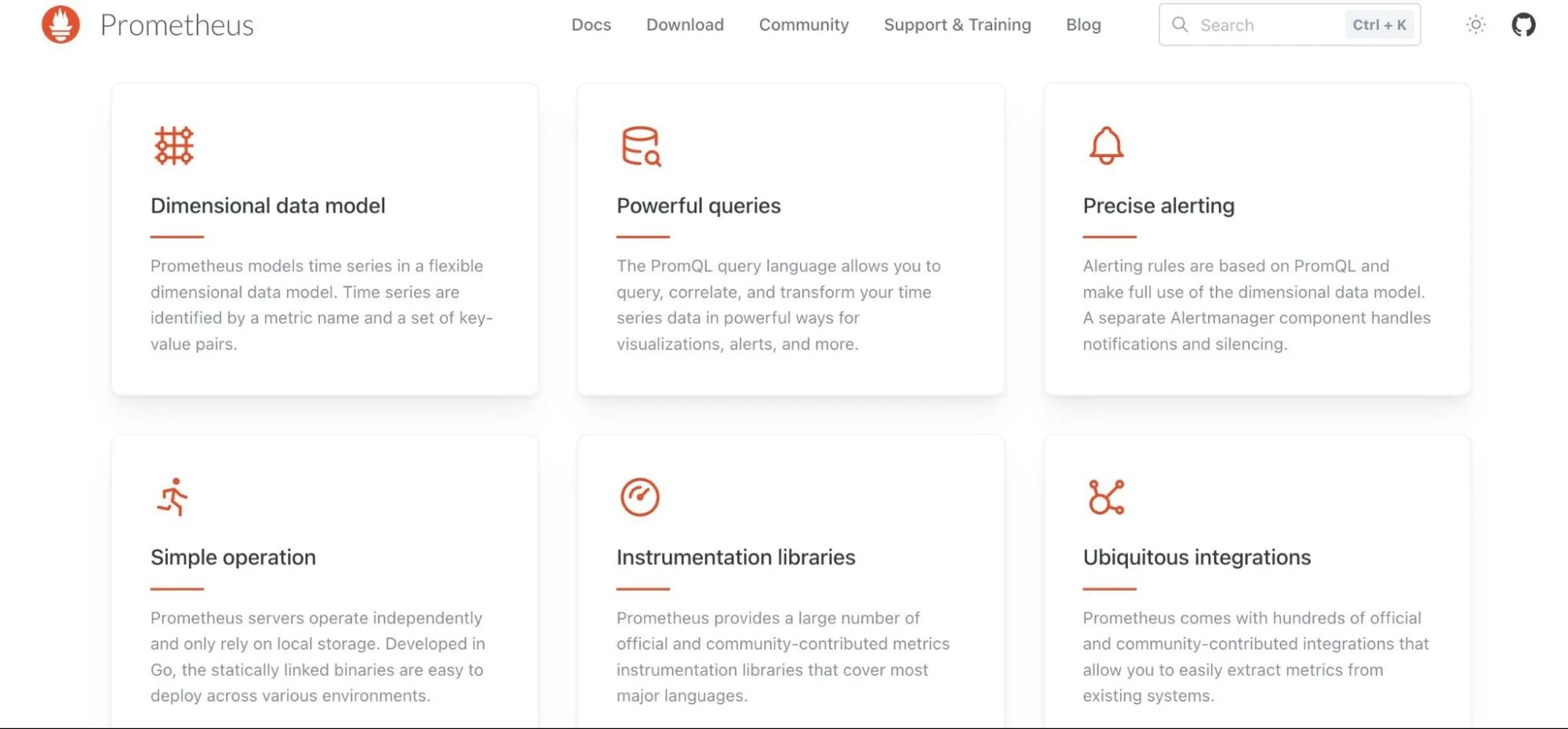
This de facto monitoring standard for Kubernetes scrapes metrics from configured endpoints at specified intervals and stores them in a time-series database. Prometheus integrates deeply with Kubernetes service discovery, supports powerful PromQL queries, and forms the foundation of many enterprise observability stacks.
Prometheus pricing: Open source. There are no licensing fees.
Prometheus alternatives include Datadog, New Relic, and OpenMetrics.
8. Grafana
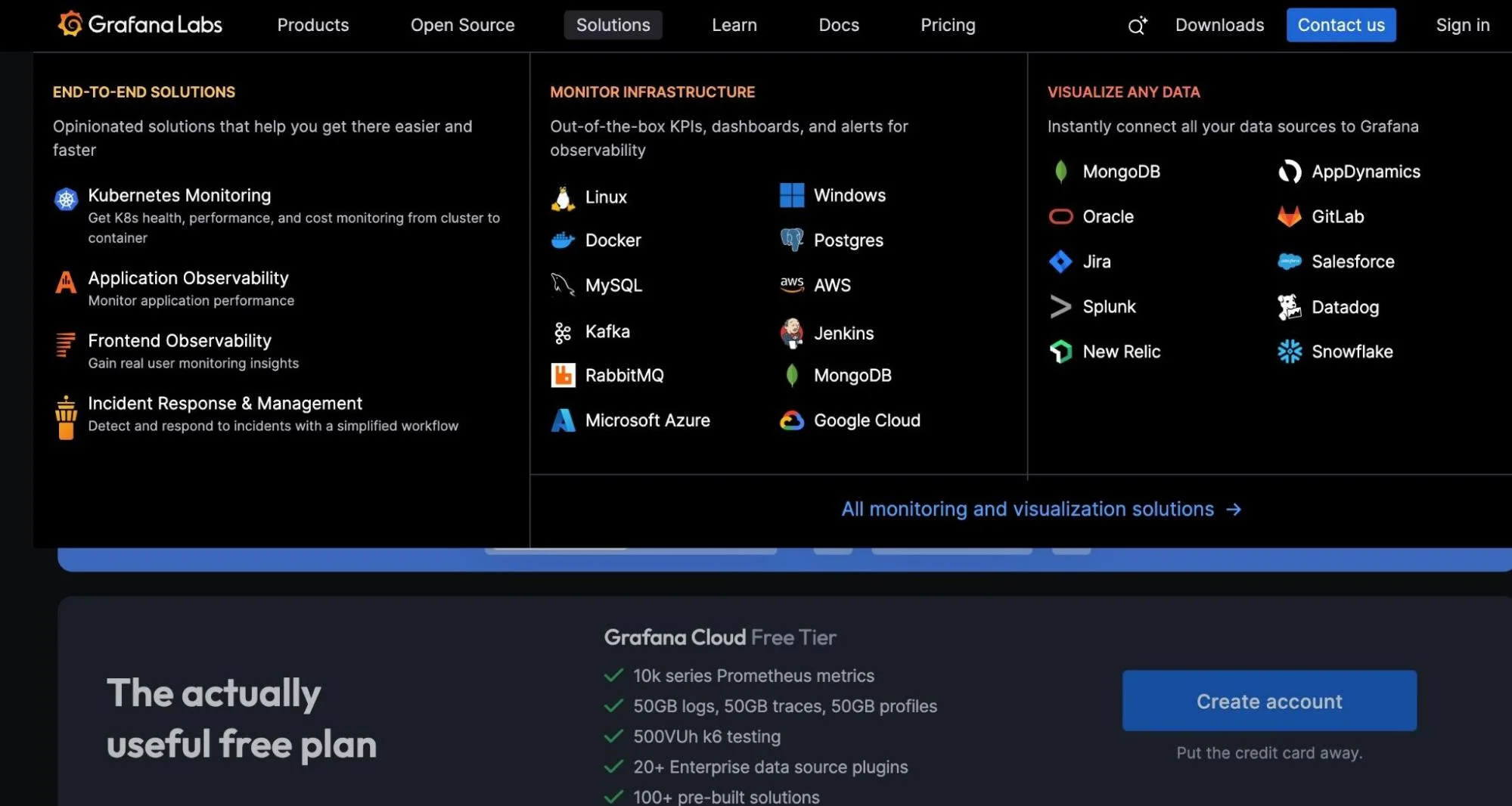
Grafana’s open-source visualization platform provides rich, interactive dashboards for metrics, logs, and traces. All in one interface. It supports alerting, team collaboration, and plug-and-play integrations with most observability tools (like Prometheus, Loki, and InfluxDB).
Grafana pricing: Grafana OSS is free and open source. Grafana Cloud starts at $0/month with 10k series and 50GB logs included, then scales based on usage. Grafana Enterprise offers premium features and support.
Grafana alternatives include Kibana, Chronograf, and Tableau (for visualization).
9. OpenTelemetry

OpenTelemetry standardizes observability across programming languages, platforms, and services. It’ll help you avoid vendor lock-in and choose the best backend for storing and analyzing your data (Grafana, Honeycomb, Datadog).
OP pricing: Free and open source. You’ll only pay for the backend systems you export data to (like Lightstep, Datadog, and New Relic).
Top OpenTelemetry alternatives: Jaeger, Zipkin, Elastic APM.
Cloud-native service mesh and networking tools
A service mesh provides critical networking functionality such as load balancing, service discovery, encryption, observability, and traffic control (all abstracted away from application code).
The following tools will help you enforce security, monitor performance, and route traffic intelligently in cloud-native environments.
10. Istio
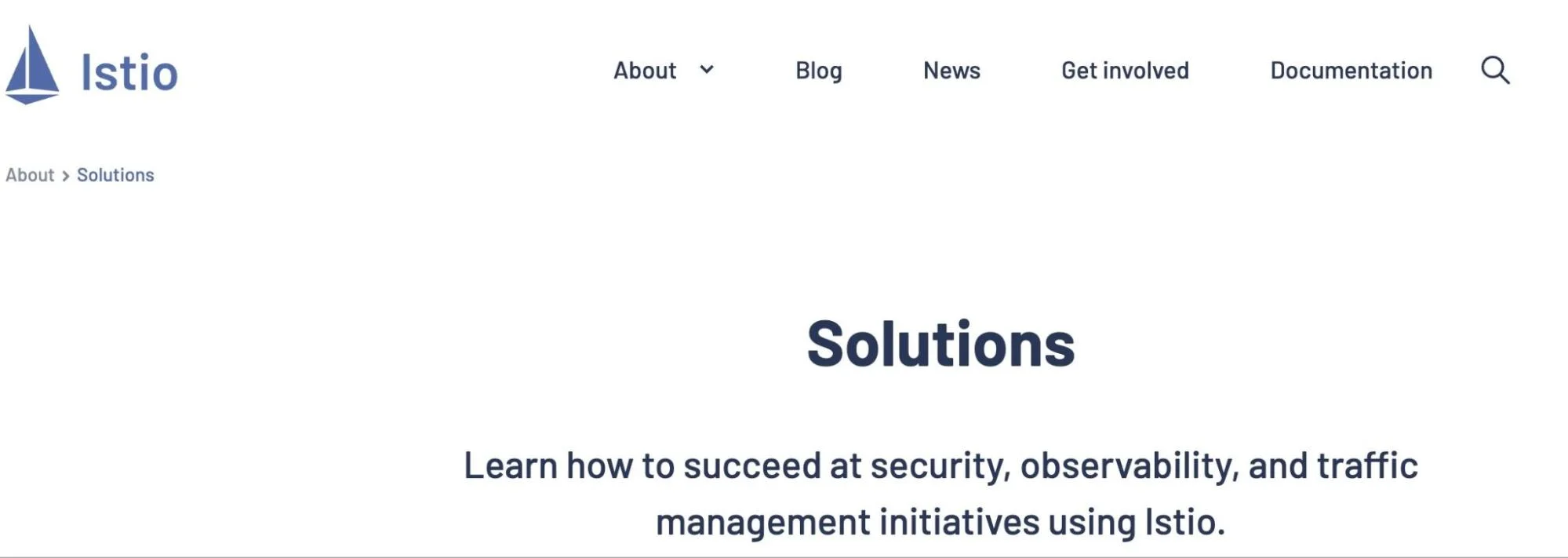
Istio is a powerful and feature-rich service mesh built to manage secure, observable, and resilient communication between microservices. It uses sidecar proxies (usually Envoy) to intercept all traffic and apply policies. Istio offers granular traffic management, mutual TLS encryption, rate limiting, canary releases, and deep telemetry support.
Istio pricing: Open source. Vendors like Tetrate and Solo.io offer commercial distributions.
11. Linkerd

Linkerd is a lightweight, Kubernetes-native service mesh designed to be simple, secure, and production-ready out of the box. Unlike Istio, Linkerd ensures minimal resource overhead. It uses Rust-based microproxies for speed and supports mutual TLS, golden metrics, and traffic shifting with significantly less configuration.
Linkerd pricing: Open source. Buoyant offers enterprise support under the Buoyant Cloud.
12. Cilium

Cilium is an eBPF-based networking and security tool for Kubernetes environments. It can function as a service mesh, enabling visibility, performance, and control at the kernel level without the need for sidecars.
Pricing: Open source under the CNCF. Isovalent offers enterprise support and cloud-hosted features.
Other service mesh tools you may want to look into include Calico, Flannel, Consul Connect, and Kuma.
Cloud-native security and policy management
These cloud-native security tools help monitor runtime activity, scan for vulnerabilities, and enforce policy, without slowing your developers.
The key tools here are:
13. Falco
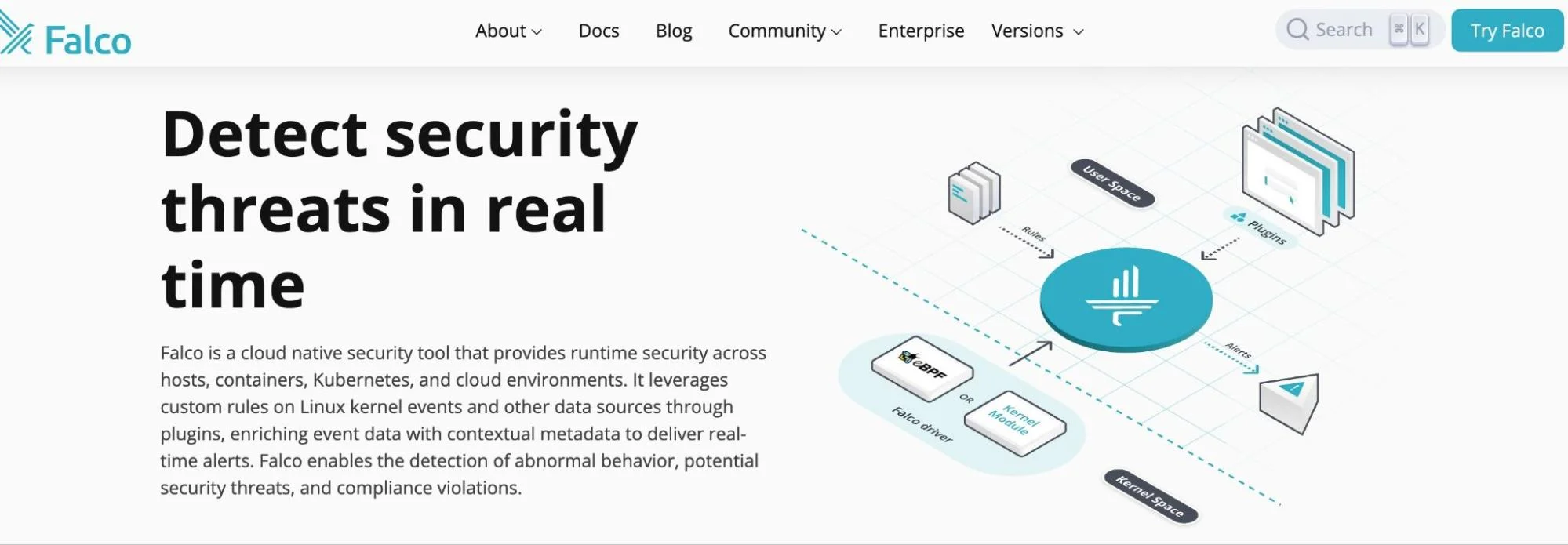
Falco is a runtime security tool that detects suspicious behavior in Kubernetes and containerized workloads. It monitors system calls to identify potentially malicious activity, such as unexpected network connections, privilege escalations, or binary executions.
Falco pricing: Open source and free to use. Commercial support is available (SYSGID Secure).
Falco alternatives include Sysdig Secure, Aqua Security, and Datadog Cloud SIEM
14. Trivy
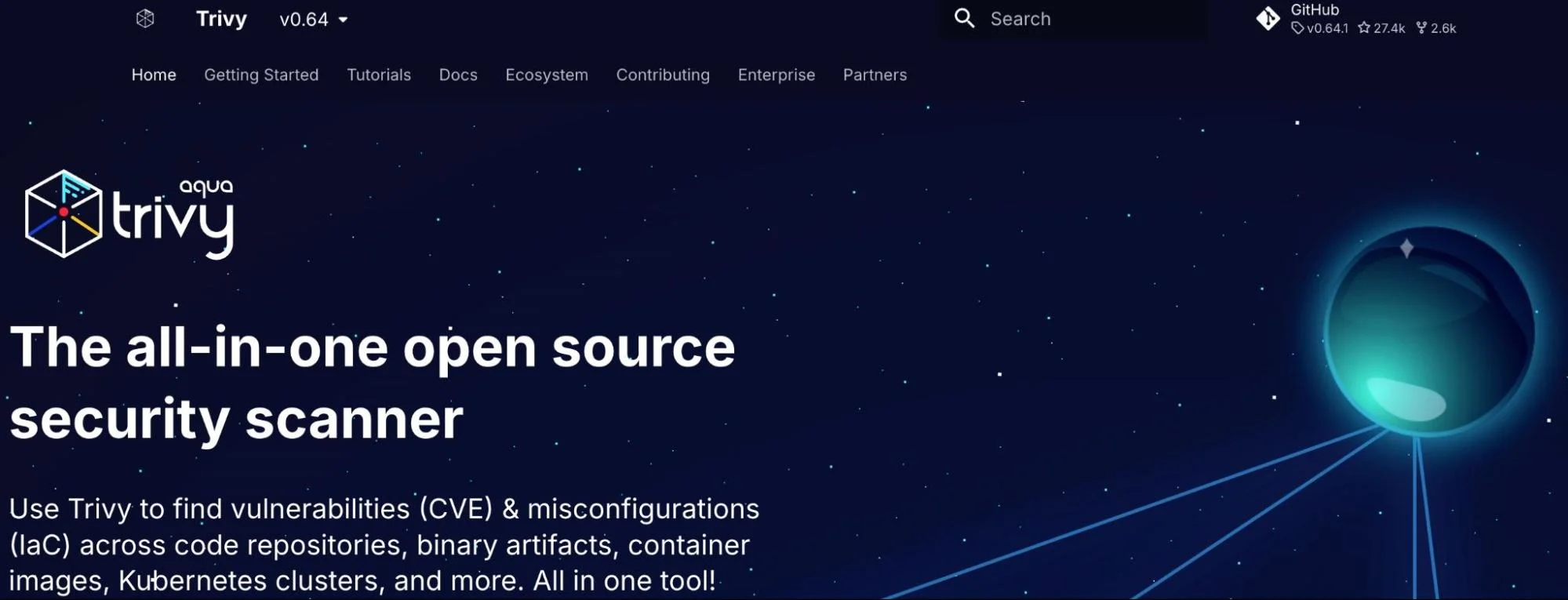
Trivy provides a fast and easy-to-use vulnerability scanner for container images, Kubernetes resources, Git repositories, and infrastructure-as-code configurations. It supports multiple formats (Docker, SBOM, CycloneDX) and CI/CD integration.
Pricing: Open source and free to use. Aqua Platform offers advanced features and enterprise support for a fee.
Notable Trivy alternatives include Grype, Clair, and Snyk.
15. Open Policy Agent (OPA) / Gatekeeper

OPA is a general-purpose policy engine that lets you write and enforce policies as code. Gatekeeper extends OPA into Kubernetes by acting as an admission controller that blocks or allows actions based on rules you define. You can define rules like “No public-facing services” or “Only approved container registries,” and block violations before they go live.
Pricing: Open source. Commercial support is available through vendors like Styra.
OPA + Gatekeeper alternatives: Kyverno, Conftest, K-Rail
Cloud-native cloud cost optimization tools
Consider these:
16. CloudZero
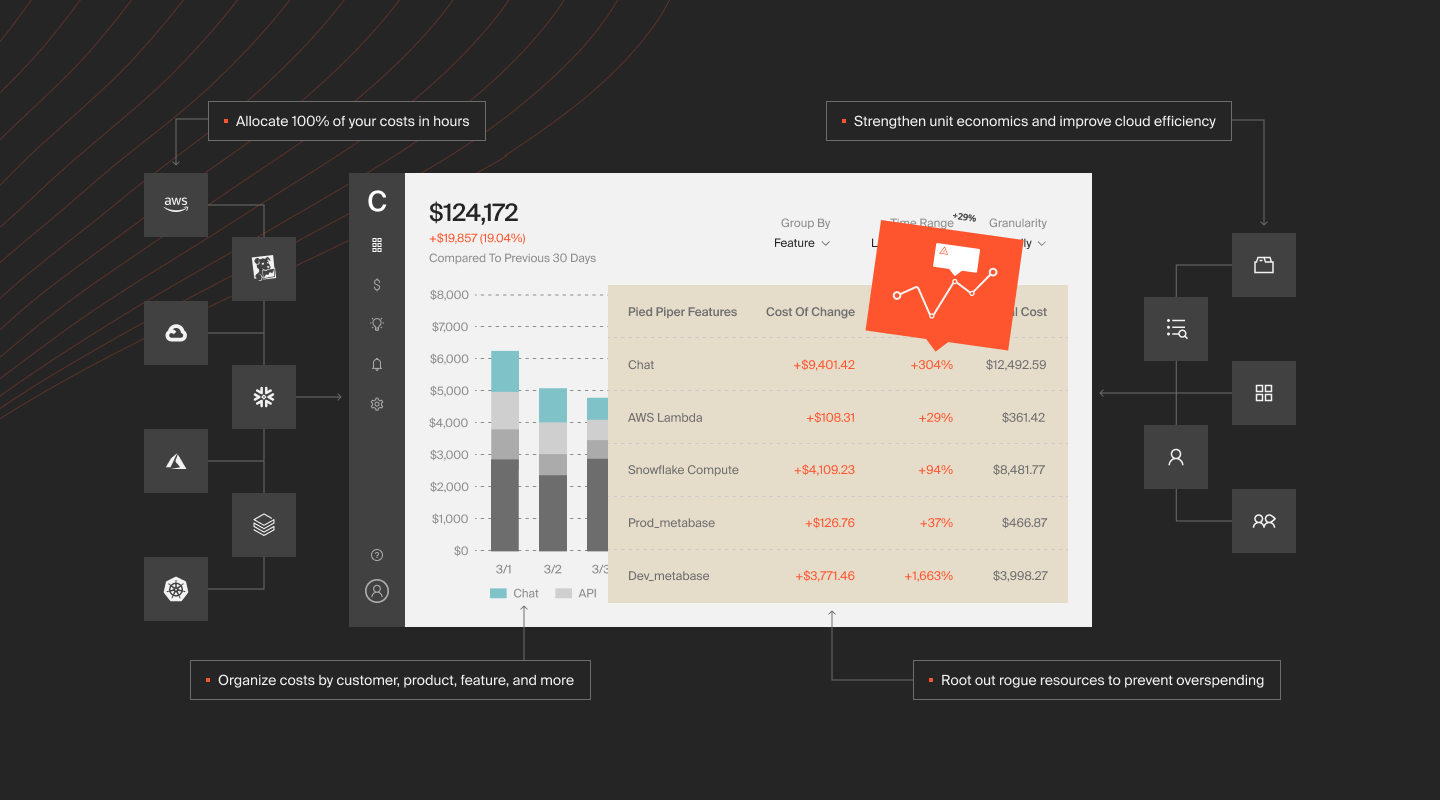
CloudZero is a cloud cost intelligence platform purpose-built for engineering, finance, and SaaS leadership teams. Unlike legacy tools that rely on perfect tagging, CloudZero delivers precise Kubernetes (K8s) cost allocation, even in complex, multi-tenant environments.
You can view costs in engineering-friendly formats like per namespace, label, or pod, like this:
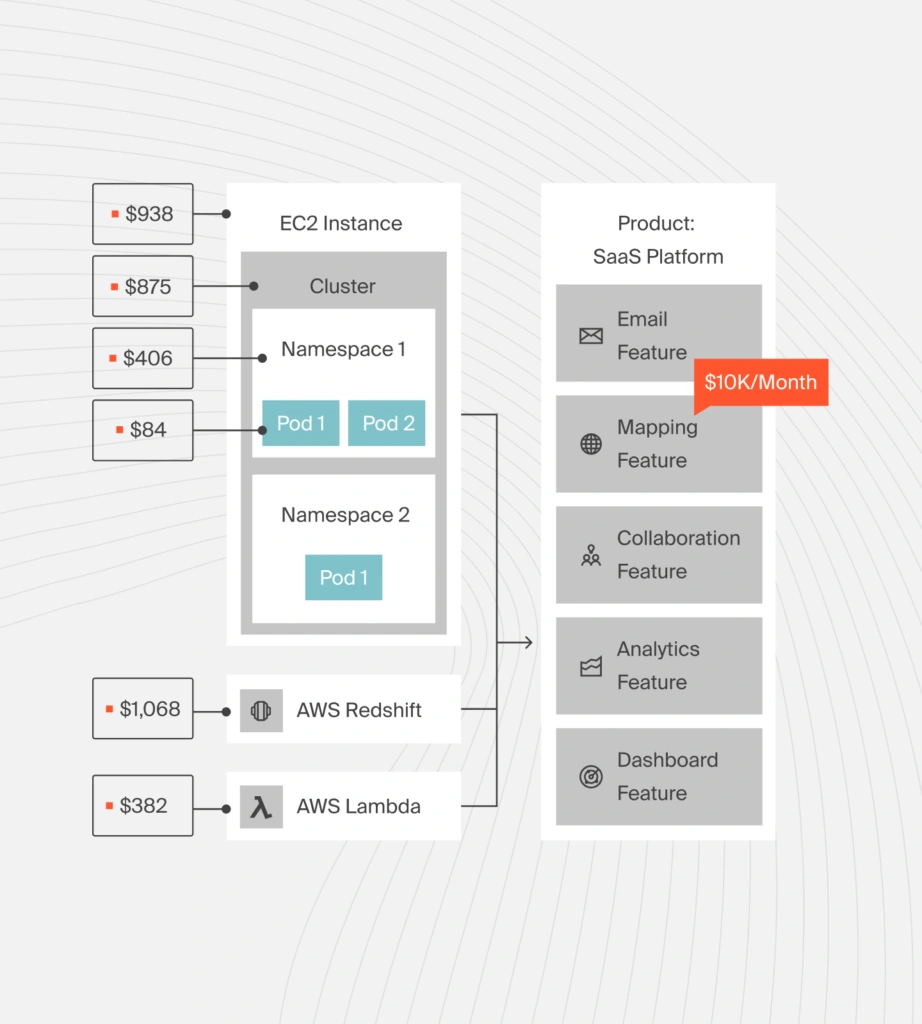
Business teams get immediately actionable business insights such as cost per customer, project, and feature. Check this out:
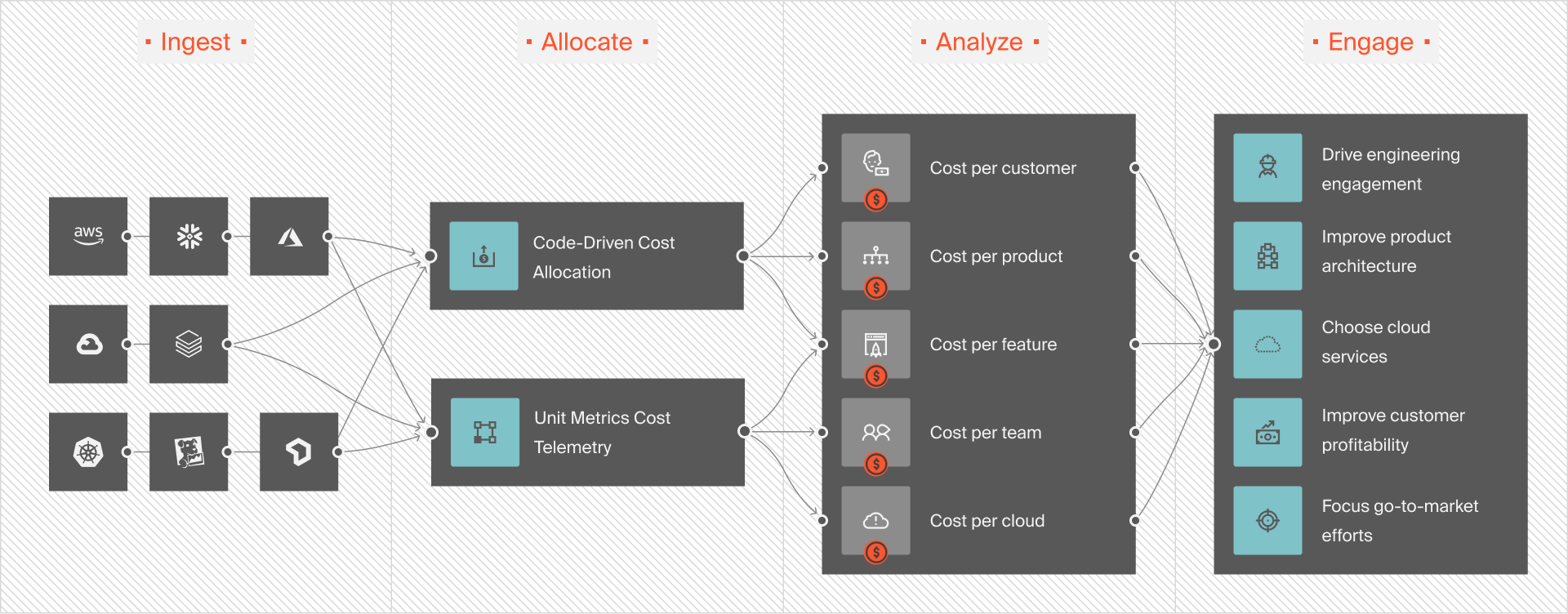
Better yet, grab the free product tour here to see for yourself.
With real-time visibility into your entire architecture, including Kubernetes, microservices, serverless, and third-party SaaS, CloudZero helps your teams:
- Measure what matters better than most (see CloudZero vs. Kubecost vs. Cast),
- Optimize proactively, and
- Drive accountability across every layer of the org.
CloudZero pricing is tiered, steady, and predictable. No flat-rate model here. You pay based on the value you get.
Kubecost
Kubecost is a cost-monitoring and optimization tool built for Kubernetes-native environments. It integrates with Prometheus to provide real-time visibility into the cost of your pods, nodes, workloads, and namespaces. Kubecost also offers right-sizing recommendations and idle resource tracking.
Kubecost pricing: Community Edition, Business, and Enterprise (available upon request) plans.
What Next: Cloud-Native Tooling Done Right Delivers Cloud Cost Confidence
Cloud-native environments make it easier to scale, and just as easy to overspend. With hundreds of services, containers, and workloads running across regions and accounts, answering a simple question like “What’s driving our cloud costs?” becomes surprisingly difficult.
CloudZero changes that by helping you:
- Map cloud spend to business outcomes, so you can tell exactly where to fix overspending
- Empower engineers to own and optimize their costs without slowing down innovation or release velocity
- Align engineering, finance, and product with shared context and real-time visibility
- Make confident architectural decisions based on both performance and cost-efficiency
Adding CloudZero to your tooling strategy pays off. We helped Upstart save $20 million and Drift cut over $2.4 million from their cloud bill, all while scaling their operations. Today, we are helping teams at Expedia, Skyscanner, and Moody’s achieve even more. Ready to build smarter, faster, without losing cloud cost control?  and see how.
and see how.
